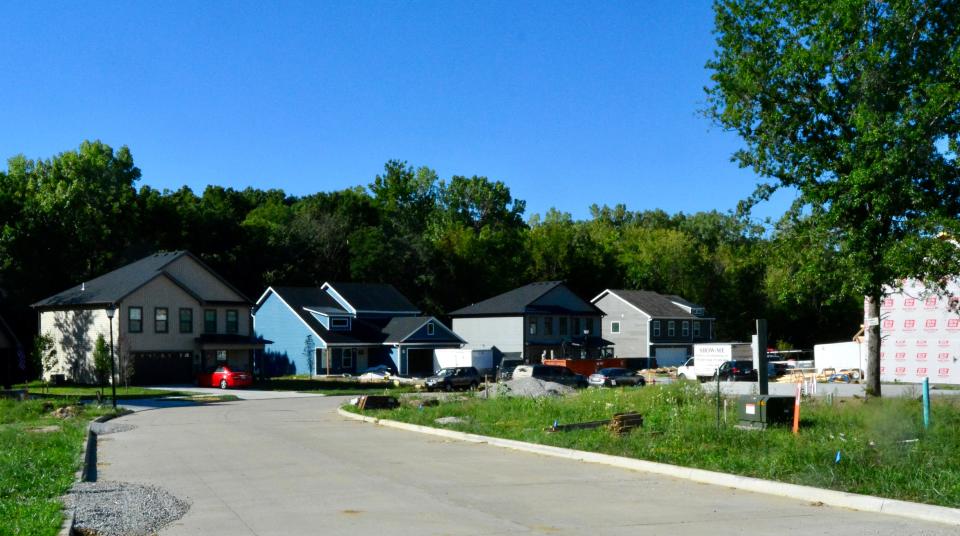Want to provide feedback on Boone County's master plan? Listening sessions scheduled
Boone County is going to need more housing. The question is how much will be needed by 2050.
That is why a planning team contracted with Boone County and advisory and technical committees made up of community members and representative stakeholders, along with other public input, are endeavoring to find an answer through updating the county's nearly 30-year-old master plan. The last time the county developed a master plan was in 1996. The master plan is a strategic plan on housing density, land use, infrastructure and more as county population continues to grow.
Work started exactly a year ago, and just this past week a second, two-hour open house meeting was held. This time it was all online. Listening sessions are planned throughout the day April 23 and 24 so teams can get even more public input.
April 23 sessions will take place:
noon, Harrisburg VFW community room;
4 p.m., Centralia City Hall; and
7 p.m., Boone County Government Center in Columbia in the commission chambers.
April 24 sessions will take place:
8 a.m., Boone County Government Center, Room 214;
noon, Boone County Government Center, Room 214; and
5 p.m., Ashland City Hall.
Teams are in the growth analysis and scenario planning phase of work, which will soon transition to developing a draft of the master plan over the summer. The updated master plan will be refined and adopted this fall.

A concurrent but separate housing study also is underway, which is a partnership of Boone County and the City of Columbia, using the framework from the Boone County Upward Mobility Action Plan. The housing study is more so focused on affordable housing, while the master plan is looking at overall housing stock availability and density, along with planning and zoning considerations.
Public input meetings planned this week on the housing study are scheduled:
1:30 p.m., Monday at the Columbia Public Library Friends Room;
1 p.m., Tuesday at the Food Bank for Central and Northeast Missouri Community Room;
5 p.m. Tuesday at the Food Bank for Central and Northeast Missouri Community Room;
5:30 p.m. Wednesday at the Hallsville Community Center; and
5:30 p.m. Thursday at the Ashland Optimist Club Building.
The master plan meeting from last week is looking at two different growth projections: more of the same, or in line with national trends, labeled as Americana, based on U.S. Census data and St. Louis University's Community Planning Lab. The more of the same projection is seeing a roughly 37% population increase by 2050, about 68,400 more people. Boone County in 2020 had a population of 183,600. If county population growth was more like the rest of the U.S., it would be a roughly 19% population increase of about 36,000 more people by 2050.
Even with the projected increases in population, household sizes are expected to decrease. So, instead of a household of two adults and a child, it will be a household of two adults. Boone County still will need from 21,700 to 48,200 new housing units by 2050 based on both population projections.
The study is not happening in a vacuum. Comparisons are being made to Johnson County, Iowa; Monroe County, Indiana; Greene County, Missouri; Douglas, Kansas and Kalamazoo, Michigan on their population changes and master plans on how land is used. In Boone County, 12% is considered land developed, 39% forest and 45% used for agriculture.
More: New Columbia Regional Airport master plan in preliminary stage as public provides input
There are three scenarios for housing growth. This includes cities growing out, more than up with housing density at the edges; more city infill development (an increase in housing density more central); or growth of rural residential areas, meaning that can eat into agricultural or forest land. The current trend is the first one, as while there is more housing density at city edges, it also is spread out on larger parcels.
An increase in housing also means looking at all the additional infrastructure that is needed too, any environmental impacts from growth and impacts to rural character.
The Boone County master plan ultimately will include "community vision and goals, existing conditions, growth analysis," along with a "future land use plan and transportation recommendations for areas of unincorporated Boone County," a master plan frequently asked questions page notes.
From 2022: 'Different approach to planning' used to create Mobility Action Plan to address Boone County poverty
Charles Dunlap covers local government, community stories and other general subjects for the Tribune. You can reach him at cdunlap@columbiatribune.com or @CD_CDT on Twitter. Subscribe to support vital local journalism.
This article originally appeared on Columbia Daily Tribune: Boone County in process of updating master plan for housing, more

